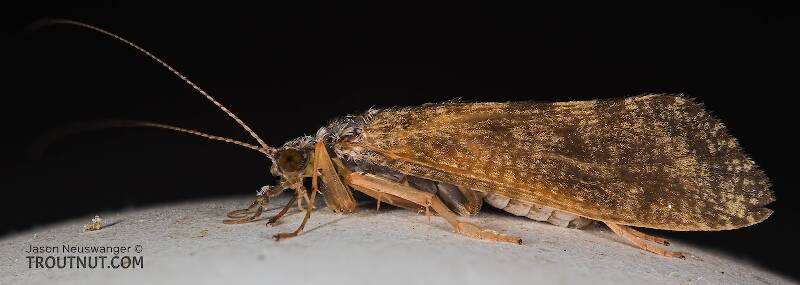
Blue-winged Olives
Baetis
Tiny Baetis mayflies are perhaps the most commonly encountered and imitated by anglers on all American trout streams due to their great abundance, widespread distribution, and trout-friendly emergence habits.


Mayfly Species Labiobaetis propinquus (Tiny Blue-Winged Olives)
Though it has a national distribution its most important hatches occur in the West, usually hatching between the larger broods of Baetis tricaudatus. Western anglers experiencing a hatch can easily confuse them with the larger Baetis bicaudatus as both nymphs appear similar with only two tails. Besides size, the adults can be separated from bicaudatus (with the help of a little magnification) because L. propinquus lacks acute costal projections on its tiny hind wings. Conversely, the presence of hind wings and lack of conical mesonotal projections makes them easy to tell from the more common and equally tiny Acentrella turbida.
Where & when
Time of year : Main broods in July and October
In 25 records from GBIF, adults of this species have mostly been collected during June (40%), August (24%), July (20%), and May (8%).
In 10 records from GBIF, this species has been collected at elevations ranging from 480 to 11401 ft, with an average (median) of 1181 ft.
Species Range
Nymph biology
Current speed: Fast or slow; best in slow
Substrate: Variety; best in weeds
Physical description
Most physical descriptions on Troutnut are direct or slightly edited quotes from the original scientific sources describing or updating the species, although there may be errors in copying them to this website. Such descriptions aren't always definitive, because species often turn out to be more variable than the original describers observed. In some cases, only a single specimen was described! However, they are useful starting points.
Male Spinner
Wing length: 4.5-5 mm
Abdominal tergites 2-6 of male imago hyaline, whitish; genitalia of the modified moffati type (now a synonym of Baetis tricaudatus); no costal projection on hind wing, which is two-veined.
Head and thorax piceous. Antennae fuscous, the tips paler. Turbinate eyes large. Legs pale; fore femur often pale ferruginous; tips of tarsi cloudy. Wings hyaline, venation pale. Hind wing long and narrow, with two veins only, the third being entirely wanting. No costal projection near the base of the hind wing. Abdominal segments 2-6 whitish, hyaline; tergites 7-10 piceous, sternites opaque whitish. Tails whitish, the basal joinings may be fuscous. A black dot near the spiracle, on each of the white segments.
Described as B. spinosus
Body length 4.5 mm, wing length 5.5 mm
Abdominal tergites 2-6 of male imago semi-translucent, whitish; only two veins in the hind wing; genitalia unique in possessing a strong pointed projection on the inner apical margin of the second forceps joint; excavation and spine between bases of forceps (see fig. 164).
Turbinate eyes deep red-brown, slightly smaller than in Baetis intercalaris. Head and thorax deep shiny black. The antero-lateral edges of the mesonotum, the pleural sutures, and the edges of the central portion of the mesosternum pale yellowish to yellowish brown. Legs white. Wings hyaline, venation pale. 8-9 cross veins in the stigmatic area of the fore wing; few or no granulations between them. No intercalaries in the first interspace. Hind wing long, leaf-like, the third vein entirely absent. Costal projection reduced to a mere trace (see fig. 163).
Abdominal tergites 2-6 semi-translucent, white or yellowish white. Tergites 7-10 deep chestnut or chocolate brown. Basal sternites whitish, semi-translucent; apical ones opaque white. Tails white. Faint black spiracular dots are present. A rounded projection on the inner apical margin of the first forceps joint; second joint somewhat cylindrical, its inner apical margin bearing a strong pointed projection. Apical joints much as in B. frondalis (now a synonym of Labiobaetis frondalis). Between the bases of the forceps is an excavation containing a sharp spine.
Start a Discussion of Labiobaetis propinquus
References
- Arbona, Fred Jr. 1989. Mayflies, the Angler, and the Trout. Nick Lyons Books.
- Caucci, Al and Nastasi, Bob. 2004. Hatches II. The Lyons Press.
- Needham, James G., Jay R. Traver, and Yin-Chi Hsu. 1935. The Biology of Mayflies. Comstock Publishing Company, Inc.
Mayfly Species Labiobaetis propinquus (Tiny Blue-Winged Olives)
Species Range
Common Names
Resources
- NatureServe
- Integrated Taxonomic Information System
- Global Biodiversity Information Facility
- Described by Walsh (1863)

